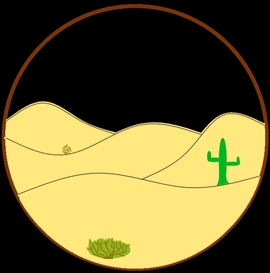Southern Marsupial Mole
Notoryctes typhlops
Where is it found?
Desert
Diet and foraging method
Key adaptations
Southern Marsupial Moles have long, spade-like claws on their forelimbs for digging, and tiny eyes hidden under skin. They also have a horny shield on their nose to further help with digging.
The females pouch - used for carrying offspring - opens backwards so that it does not fill with soil when she is digging.
The females pouch - used for carrying offspring - opens backwards so that it does not fill with soil when she is digging.
Social organisation
Solitary
Did you know that...?
Marsupial moles have really small eyes.
They spend most of their time underground in the dark, therefore have no need to see. Moles eyes have consequently reduced in size over evolutionary time meaning today, they have tiny, vestigial eyes.
They spend most of their time underground in the dark, therefore have no need to see. Moles eyes have consequently reduced in size over evolutionary time meaning today, they have tiny, vestigial eyes.
Taxonomy
Picture credits:
Maps from: http://species.mol.org/species/
"Notoryctes typhlops 1891 (crop)" by Drawing: Rosa Catherine Fiveash (1854-1938)Lithograph: H. Barrett (c.1850-?, fl.1880s), for the South Australian Government Printing Office - Plate II, Transactions of the Royal Society of South Australia, vol 14 (1890-1891). Licensed under Public Domain via Wikimedia Commons - https://commons.wikimedia.org/wiki/File:Notoryctes_typhlops_1891_(crop).jpg#/media/File:Notoryctes_typhlops_1891_(crop).jpg
"Notoryctes typhlops 1891 (crop)" by Drawing: Rosa Catherine Fiveash (1854-1938)Lithograph: H. Barrett (c.1850-?, fl.1880s), for the South Australian Government Printing Office - Plate II, Transactions of the Royal Society of South Australia, vol 14 (1890-1891). Licensed under Public Domain via Wikimedia Commons - https://commons.wikimedia.org/wiki/File:Notoryctes_typhlops_1891_(crop).jpg#/media/File:Notoryctes_typhlops_1891_(crop).jpg






